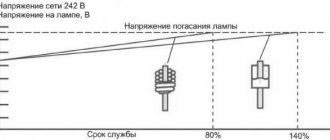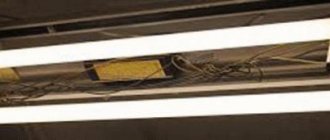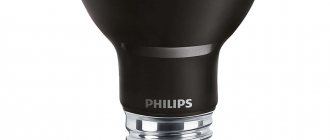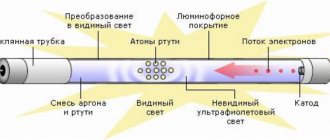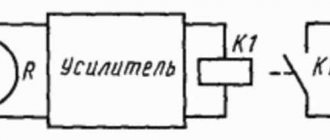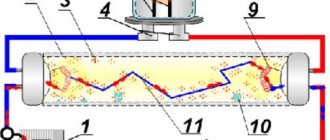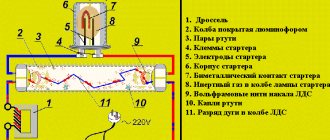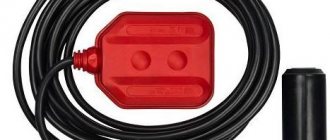03/20/2020 642 Lighting
Author:Ivan
DRL gas-discharge lamps appeared at the beginning of the 20th century and since then have been widely used for lighting open and closed spaces, as well as city streets and highways. Changes are being made to the design of lamps to improve light characteristics and reduce the amount of environmentally harmful materials used in production.
[Hide]
What is a DRL lamp?
DRL refers to a subtype of mercury gas-discharge light source. Explanation of the designation - arc fluorescent lamp. To produce light, DRL uses the principle of constant burning of a discharge in an atmosphere saturated with mercury vapor.
Depending on the partial pressure of mercury vapor in the bulb, lamps are divided into low, high and ultra-high pressure devices. Devices with high and ultra-high pressure are divided into general-purpose lamps and special light sources.
Device
The key element of a gas-discharge lamp is the working burner, made of a refractory and chemical-resistant transparent material. The material used for the flask is quartz glass or ceramics. The internal volume is filled with argon or a mixture of inert gases. There is a small amount of mercury in the flask. When the lamp is turned off, mercury appears in the form of one or more balls or is found in the form of deposits on the walls of the bulb or electrodes.
According to the design of the DRL lamp, it should be divided into types:
- with four electrodes;
- with three electrodes (the most modern options);
- with two electrodes (early models, not currently produced).
Four-electrode lamps
A four-electrode mercury lamp consists of an outer glass bulb that is sealed into a screw base. Inside the flask along the axis of the lamp there is a burner discharge tube filled with an inert gas (argon). The tube contains a small amount of mercury in metallic form. The main and ignition electrodes, made of nickel, are attached to the ends of the tube - four in total. The ignition element is connected to the opposite main electrode through an additional resistor that limits the current. When the lamp is turned on, the ignition electrodes ensure rapid formation of a discharge at the design voltage.
DRL lamp burner, the connection of the electrodes through the resistor is clearly visible
To ensure the operation of the lamp, it is necessary to use a matching and ballast device, which is an inductor or inductor. The latter is connected in series to the general electrical circuit of the lamp.
Three-electrode lamps
Lamps with three electrodes are structurally similar to four-electrode lamps. The advantage is improved manufacturability and reduced metal consumption. The ignition time, as well as the stability of operation and service life, do not differ from four-electrode DRLs.
Three-electrode lamp
Two-electrode lamps
The two-electrode lamp had a direct quartz burner (glass tube) with a pair of electrodes installed in it. The burner was made as a single unit with an outer flask made of special glass capable of withstanding heating to high temperatures. The inside of the flask was coated with phosphor. The burner flask is filled with argon and has a ball of mercury inside. Electrodes made of tungsten are sealed at the ends. There was a screw base on the bottom of the outer flask.
Difficulties with igniting lamps led to the creation of four-electrode designs, which replaced their predecessor by the end of the 70s.
Operating principle
The operating principle of some types of lamps differs.
Three- and four-electrode lamps
Applying voltage to a four-electrode lamp causes the formation of a glow discharge between the main and ignition electrodes. High voltage is not required for ignition, since the gap between the elements is small. The combustion of two discharges creates in the volume of the flask a large number of particles that are charge carriers. Due to this, a breakdown of the gaseous medium between the main electrodes occurs and a glow charge appears, which is quickly converted into an arc charge.
For the first 10-15 minutes, the lamp operates in transition modes, gradually warming up and flaring up. The current consumption is several times higher than the rated value, therefore, to ensure safe operation and increase the service life of the device, a ballast is used. The latter has an electronic circuit and does not limit the current consumed by the lamp.
The lower the ambient temperature, the longer the transient heating mode of the mercury arc lamp lasts.
After warming up, the discharge in the flask produces a glow in the visible and invisible range. The visible glow is blue or violet. Invisible - ultraviolet radiation, falling on the phosphor layer on the walls, causes it to glow. The phosphor produces light of a reddish hue, which mixes with the spectrum of the burner. The final glow of the DRL lamp is almost white.
Features of the operation of three- and four-electrode DRL lamps:
- A distinctive feature of DRL lamps is the pronounced dependence of the glow intensity on power fluctuations. A voltage deviation of 15% results in a flux change of 30%. The lamp standard does not allow voltage drops of more than 15%, as this causes problems with maintaining a stable arc discharge. When the voltage drops by 75% of the nominal value, the arc goes out and restarting is impossible.
- Another negative feature of DRL lamps is the intense heat generation, which imposes a number of requirements on the design of sockets, lamps and wiring.
- After warming up, the pressure of the gas medium in the burner flask increases several times, which causes an increase in the voltage required to ignite the arc. Therefore, a stalled DRL lamp can be re-lit only after cooling. A similar effect is often observed in street lamps, when an extinguished lamp lights up again only after 10-15 minutes.
Two-electrode lamps
To ignite a two-electrode lamp, a current is required that is tens of times higher than the supply voltage of street or household networks. The lamp was started using a separate device that generated a short-term high-voltage current pulse. The most common option was the PURL-220 device (a starting device for mercury lamps designed for an operating voltage of 220 V). The device was based on a gas discharger, which had a short service life (several times less than the lamp itself).
The spark gap supplied a voltage pulse of several thousand volts to the electrodes. A high current pierced the gap between the electrodes, filled with an inert gas (usually argon). Argon or other inert gas contributed to further ignition of the charge. After the formation of a steadily burning discharge, heat began to be released, which heated the mercury to the boiling point. After this, the supply voltage was reduced to the standard value and the lamp operated in the main discharge mode.
Subtypes of mercury arc lamps
There are types of DRL lamps:
- DRIZ lamps;
- DRI lamps;
- mercury-quartz lamps;
- DRV lamps.
DRIZ lamps
In addition to products with a phosphor-coated bulb, there are lamps with a partial reflective coating. The devices are designated as DRIZ. The efficiency of lamps of this design is higher than that of conventional lamps, since the number of reflections of light in the bulb is reduced and the burner is focused. Since the lamp forms a directed beam of light, it must be positioned. For this purpose, a special base design is used, which allows you to change the position without losing or weakening the contact.
DRI lamps
Based on DRL lamps, light sources have been developed using bulbs with an atmosphere consisting of:
- inert gases;
- mercury;
- metal halides.
The lamps were called DRI - mercury arc lamps with emitting additives. The use of halides has made it possible to increase the luminous efficiency of devices and maintain a radiation spectrum that is comfortable for the human eye. The outer bulb retains the phosphor coating and has an elongated or cylindrical shape. The use of various compounds of metals and halogens makes it possible to shift the spectrum in any direction, achieving a different glow (for example, greenish or yellowish).
Mercury-quartz lamps
They represent a special case of DRL. The design consists of a flask filled with inert gas and mercury vapor, as well as two electrodes mounted on the sides. In fact, the lamp is two-electrode, so special equipment is required to start it.
When the lamp operates, a significant amount of ozone is formed, which predetermined the use of the devices in installations for disinfecting premises. Ozone is formed under the influence of the glow of mercury vapor at a certain frequency. Special lamps are produced with a titanium-based coating, which cuts off the part of the spectrum that causes the formation of ozone.
DRV lamps
In recent years, lamps of a combined type have begun to be used under the designation DRV - mercury-tungsten arc lamp. The design includes a burner and an additional tungsten filament installed outside the body of the burner flask. The outer flask has an atmosphere of inert gas, which reduces the burnout rate of the spiral and provides an increased service life of the device.
The spiral performs an additional function, being a current limiter in the burner. The advantage of the combined type paw is the ability to work in conventional lamps without additional starting and control devices. The luminous flux intensity is 30-50% lower than that of classical DRL lamps of similar power.
Models and specifications
DRL lamps with a power of 125 W to 1 kW are common on the Russian market. Devices are designated by watt, for example, a product model DRL 400 or DRL 700.
On sale there are light bulbs manufactured by the following companies:
- Osram;
- Phoenix;
- Philips;
- Megawatt;
- Lisma.
As an example, we can consider the characteristics of several lamps.
| Parameter | Philips HPL-N | Lisma DRL 250 | Lisma DRL 125 |
| Power, W | 125 | 250 | 125 |
| Voltage, V | 220 | 220 | 220 |
| Resource, hours | 16000 | 12000 | 10000 |
| Base | E27 | E40 | E27 |
| Color temperature, K | n. d. | 4000 | n. d. |
| Flux, lm | 6200 | 13000 | 5900 |
| Flask type | Ellipsoidal, matte finish | Ellipsoidal, matte finish | Ellipsoidal, matte finish |
| Length, mm | 169 | 210 | 178 |
| Diameter, mm | 75 | 76 | 76 |
Some technical parameters of lamps:
- power of standard devices up to 1000 Watt;
- special power - up to 12 kW;
- sockets of type E27 (for medium-power lamps) or E40 (products more powerful than 250 W);
- current consumption is not higher than 8 A (for standard lamps);
- light radiation - more than 3200 lm;
- resource - 10,000 hours.
Due to the introduction of stricter standards for the production of products containing mercury, the production of DRL lamps is being reduced. In Russia, starting from 2022, it is planned to introduce a complete ban on the manufacture and sale of mercury devices. Mercury arc lamps are also affected.
As an alternative, it is proposed to use NL arc devices that use sodium-based compounds instead of mercury.
Traditional Applications
Depending on the design, DRL lamps are used for the following purposes:
- lighting of streets, open areas, industrial premises;
- architectural lighting systems (based on DRI lamps);
- attracting schools of fish and plankton during fishing;
- directional lighting in open areas (lamps with a mirror reflector);
- greenhouse lighting systems (lamps with focused light DRLF, support the process of photosynthesis);
- medical equipment for disinfection of premises.
Rules for connecting DRL lamps
When installing and operating gas-discharge lamps and luminaires with them, a number of rules must be observed:
- The outer bulb of the gas-discharge lamp must be free of dirt or grease. Otherwise, when heated, the fat will cause uneven heating, which will destroy the flask material.
- The DRL lamp must be installed while wearing gloves. It is recommended to wipe the flask with a degreasing compound.
- A lamp with a DRL lamp must have a reliable fixation due to its large weight and size.
- Repair and installation work is carried out on a de-energized line.
- It is prohibited to use a choke ballast that is not intended for this type of luminaire and does not correspond to the power of the lamp.
- The design of the lamp should not allow water or other liquids to enter the lamp, otherwise this will cause instant destruction of the device.
- When installing lamps yourself, you should check the correctness of the work performed.
- During the operation of lamps in industrial premises, it is recommended to wipe the bulbs from dust. The frequency of work depends on the dustiness of the room.
- The wiring must have heat-resistant insulation that can withstand high heat during operation. This applies to wires connected to the lamp socket.
- Wire connections must ensure reliable contact and be insulated.
Additions about IZU and chokes.
- Purpose. In a luminescent device, the inductor coil creates the necessary impulse so that metal vapors can burn in the device, and it also maintains the required power value during operation of the device.
- Power. The main technical parameter of the limiter is its power value. The performance of all other parameters and the lamp as a whole depends on it. Based on power indicators, these parameters will be different for each lamp limiter. According to the power level, limiters are divided into three large categories: B, C, and D. The name of the limiters depends on which category they belong to.
- Self-induction coefficient. Due to the inductance of the inductor, the power of electricity that falls on the conductive contacts of the lamp.
Useful tips Connection diagrams Principles of operation of devices Main concepts Meters from Energomer Precautions Incandescent lamps Video instructions for the master Testing with a multimeter
How to connect a DRL lamp through a choke?
To ignite and operate the DRL lamp, it is necessary to make the correct connection, which will ensure long-term and safe operation of the light source. The connection circuit is a series connection of the inductor and the lamp. To operate the circuit, a standard household electrical network (220 V, 50 Hz) is used.
What is a throttle for?
The main purpose of the choke in the DRL lamp circuit is to limit the current supplied to the burner. In the absence or direct breakdown of the choke, the gas-discharge lamp will immediately fail because it will not withstand the supply of increased current. When starting and operating a DRL lamp, floating currents and resistance arise in the circuits. The moment of ignition of the arc is especially dangerous, when the ionized gas environment sharply loses resistance, which causes an increase in current strength and increased heat generation.
If there is no DRL current limiter, then an uncontrolled increase in the release of thermal energy will occur, which will lead to the destruction of the burner body and the entire lamp.
In addition, the inductor smoothes out light pulsations, which are especially noticeable when the voltage in the power circuit is unstable.
Throttle design and types
Structurally, the starter is an inductive choke built on a magnetic core in the shape of a rod. The design of the magnetic circuit of the throttle contains adjusting shims made of electrical cardboard. The elements are installed in the air gap, after which the magnetic circuit is fastened using staples or pins.
The operating winding depends on the type of inductor. In the manufacture of devices of the built-in category, PETV copper wire is used; for closed-type devices, PEL winding wire is used. After assembly, the chokes are filled with a thin layer of electrical varnish of the ML-92 type. Products in a casing are installed inside a metal case, which is filled with quartz sand. From above, everything is filled with the KP compound, which ensures insulation of the device.
General view of the throttle
To ignite four-electrode DRL lamps, two types of devices are used:
- Device for use in closed luminaires outside buildings. The starter remains operational in the temperature range from -25°C to +30°C and air humidity up to 90%. The device is not equipped with a separate housing.
- Starter with an individual protective casing, adapted for installation separately from the lighting device. Designed for operation in industrial or warehouse premises in the temperature range from 0°C to +45°C and air humidity up to 85%. There are modifications that can operate at temperatures up to +60°C, as well as versions for outdoor installation separately from the lighting device (designed for temperatures from -25°C to +30°C).
Connection diagram
The choke is installed in a circuit in series with the DRL lamp. The characteristics of the coil are determined by the cross-section of the copper wire and the number of turns wound on the coil. In addition, the material of the magnetic core and its cross-section have an impact on the characteristics. The coil is an integral part of the active resistance of the circuit. This parameter must be taken into account when calculating ballast.
Connection diagram for DRL lamp via inductor
Troubleshooting
If the assembled circuit does not work, then it is necessary to check the serviceability of the elements using a tester switched to ohmmeter mode. It is possible to use a separate ohmmeter. By connecting the device to the terminals of the inductor winding, you can determine the presence of an interturn short circuit (infinite resistance). You should also check the device for breakdown by connecting the ohmmeter probe to the coil terminal and the metal body.
If the choke has an interturn short circuit of several turns, then this does not affect its parameters or the performance of the circuit in any way.
The electronic throttle must be opened and the integrity of the fuse, as well as the tracks and electronic components checked. The measured values are compared with the nominal values from the reference literature.
How to make a throttle yourself?
Self-manufacturing of chokes for DRL lamps is only advisable if a factory product is not at hand.
You can make your own throttling device using standard starting elements from fluorescent lamps. A 40 W DRL choke requires three triggers or two with a power consumption of 80 W.
General rules for assembling and operating a homemade device:
- the chokes are connected in parallel, forming a common starting device;
- connections between nodes must have reliable contact;
- connecting wires must have insulation that protects the unit from short circuits;
- It is possible to install throttle elements in a common box.
Circuit diagram with a homemade choke consisting of three starters for fluorescent lamps
What a non-standard connection option can achieve
Changing the usual method of connecting electrical components in fluorescent lamps is carried out in order to minimize the risk of device failure. Fluorescent lamps, despite having impressive advantages, such as excellent luminous flux and low energy consumption, also have some disadvantages. These should include:
- during their operation they produce a certain noise (hum), which is due to the functioning of the ballast element;
- high risk of starter burnout;
- possibility of filament overheating.
The above diagram for connecting the components of the electrical circuit will avoid all these disadvantages. When using it you will receive:
- the device will operate silently;
- there is no starter, which burns out more often than other parts when the lighting system is used frequently;
- It becomes possible to use a lamp with a burnt-out filament.
Here the role of a choke will be performed by a regular incandescent light bulb. Therefore, in such a situation there is no need to use expensive and rather bulky ballast.
How can you start a DRL lamp without a choke?
To operate an arc lamp without an additional device, you can go in several directions:
- Use a light source with a special design (DRV type lamp). A feature of lamps that can operate without a choke is the presence of an additional tungsten filament, which acts as a starter. The parameters of the spiral are selected according to the characteristics of the burner.
- Starting a standard DRL lamp using a voltage pulse supplied by a capacitor.
- Ignition of a DRL lamp using a series connection of an incandescent lamp or other load.
Ignition of a lamp using a serial connection of a boiler is presented in a video filmed for the channel “A little bit of everything”.
Purchase of a special model DRL 250
Direct-on lamps are available in the product lines of a number of companies:
- TDM Electric (DRV series);
- Lisma, Iskra (DRV series);
- Philips (ML series);
- Osram (HWL series).
The characteristics of some direct-on lamps are shown in the table.
| Parameter | DRV 160 | DRV 750 |
| Power, W | 160 | 750 |
| Flow, Lm | 8000 | 37500 |
| Base | E27 | E40 |
| Resource, hours | 5000 | 5000 |
| Color temperature, K | 4000 | 4000 |
| Length, mm | 127 | 358 |
| Diameter, mm | 77 | 152 |
Operating principle of the DRV lamp:
- At the initial stage of ignition of the lamp, the spiral provides a voltage at the cathodes within 20 V.
- As the arc ignites, the voltage begins to increase, reaching up to 70 V. In parallel, the voltage on the coil decreases, causing a decrease in the glow. During operation, the spiral acts as an active ballast, which reduces the efficiency of the main burner. Therefore, there is a decrease in luminous flux with equal power consumption.
Advantages of DRV lamps:
- the ability to operate in 50 Hz alternating current networks with a voltage of 220-230 V without additional starting devices and supporting discharge combustion;
- Possibility of use instead of incandescent lamps;
- short time to reach full power mode (within 3-7 minutes).
Lamps have a number of disadvantages:
- reduced luminous efficiency (compared to conventional DRL lamps);
- resource reduced to 4000 hours, determined by the life of the tungsten filament.
Due to the disadvantages, DRV lamps are used in household lamps or in old industrial installations intended for the installation of powerful incandescent lamps. In this case, the devices improve illumination while reducing energy consumption.
Using a capacitor
When using lamps of the DRI type, starting is performed through an IZU - a special device that gives an ignition pulse. The composition includes a series-connected diode D and a resistance R, as well as a capacitor C. When voltage is applied to the capacitor, a charge is formed, which is supplied through the thyristor K to the primary winding of the transformer T. An increased voltage pulse is formed on the secondary winding, which ignites the discharge.
Capacitor ignition circuit
The use of elements allows you to reduce energy consumption by 50%. The connection diagram is identical; a dry-type capacitor is installed in parallel, designed to operate in circuits with a voltage of 250 V.
The capacitor capacity depends on the operating current of the chokes:
- 35 uF at current 3A;
- 45 microfarads at a current of 4.4A.
Using an incandescent lamp
To ignite the DRL, an incandescent lamp with a power equal to a gas-discharge lamp can be connected. It is possible to turn on the lamp by using a ballast resistor with the same power (for example, a boiler or an iron). Such methods do not provide stable operation and do not meet safety requirements, therefore they are not recommended for use.
Ignition of DRL 250 using an incandescent lamp with a power of 500 watts is demonstrated by the author Andrey Ivanchuk.
Scope of application
DRLs are designed for lighting large areas. They are usually used in street lighting, gas stations, and roads. They are often used in warehouses. Those. where high quality color rendering is not needed.
They are not used for permanent use in residential premises. This is explained by the low color rendering coefficient and the long time to reach normal mode. At home, at a minimum, it is inconvenient to wait about ten minutes after clicking the switch.
Very often they are found in lighting installations for exhibition complexes. Here their advantages are fully revealed - the maximum power can be 1 kW, while the luminous flux reaches 52,000 lumens. Their glow is usually the same color - 5500 Kelvin.
Photo gallery
Below are photos of some types of DRL.
Gas discharge lamp with transparent bulb
Sample of a modern DRL lamp
Mirror discharge lamp
Mercury-quartz lamp

